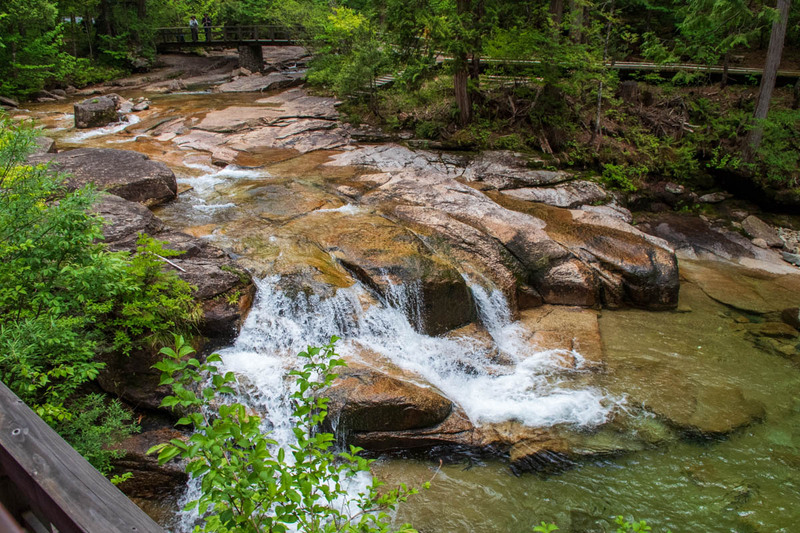Where to Go Forest Bathing in Nagano
Get in touch with nature in Nagano's pristine forests
Update:2023/12/08

Sometimes it’s easy to lose touch with nature when living in a large town or city. We hear the roaring of engines instead of rivers. The rustling of pocket change instead of the rustling leaves. The chirping of phones instead of the chirping of birds. Before we know it, entire seasons have come and gone.
There are many ways to spend time in nature, such as going hiking, skiing or camping, but trying to get back in touch with nature demands something more. It requires honing one’s senses and focusing on the sights, sounds and aromas around you. One place that offers natural stimulation for all your senses is the humble forest, and so the practice of forest bathing, or shinrin-yoku, was born.
Over 80% of Nagano Prefecture is covered in forest, so there are many places around the prefecture to go forest bathing.
Spend some quality time in nature and bathe in the sights, sounds and fragrances of Nagano’s forests.
Akasawa Recreational Forest
The Kiso Valley
The Kiso Valley in southern Nagano is known for its steep mountains and lush forests. The lumber from this region was prized for its high quality, so the forests here were carefully regulated by the government. As a result, people can still enjoy the forests of the Kiso Valley to this day.
Filled with 300-year-old Hinoki cypress trees, the Akasawa Recreational Forest is one of Japan’s three most beautiful forests and is known as the birthplace of forest bathing in Japan. Seven trails, ranging from 1.5 to 3.7 kilometers in length, meander through the woods, occasionally passing waterfalls and crossing large streams. There is also the old logging railroad, which has been repurposed as a short pleasure cruise through the area.
In addition to Hinoki cypress, the other Five Trees of Kiso (sawara, asunaro, kouyamaki, nezuko) can be seen here as well. Many deciduous trees grow here, so in autumn you can enjoy vibrant red and yellow foliage (around mid- to late October).
Healing Forests around Lake Nojiri
Shinano Town
Shinano Town is centered around Lake Nojiri and surrounded by the picturesque Hokushin Gogaku mountains (Mt. Myoko, Mt. Kurohime, Mt. Togakushi, Mt. Iizuna and Mt. Madarao). It is a popular destination for year-round all kinds of outdoor activities, and its lush forests are a perfect place for slowing down and reconnecting with nature.
From long hikes to Naena Falls to short jaunts along the forested lake shoreline or strolls through the woods at the base of Mt. Kurohime, Its varied terrain offers many different courses for forest bathing.
This area has also been designated a 2-star Forest Therapy Base by the Forest Therapy Society for its developments and achievements in forest therapy programs. Shinano’s certified guides offer many ways to get in touch with nature, whether through aromatherapy, foraging, night walks, or even trail maintenance. Learn more about Shinano Town's forest therapy programs here.
The Beech Forests of Nabekura Kogen
Iiyama City

Above the city of Iiyama in Northern Nagano, Nabekura Kogen is a highland area known for its forest of beech trees and the heavy blankets of snow that cover the area during winter.
In the middle of the highland is the Mori-no-Ie outdoor activity center. Depending on the season, the center offers hiking, cycling, snowshoeing tours as well as cooking lessons. They also have forest therapy courses as well. There are 10 self-contained cabins on location, so you can fully immerse yourself in the forests of Nabekura Kogen for days or weeks at a time!
The Shin’etsu Trail, a 110-kilometer-long route connecting Niigata and Northern Nagano, also passes through here.
The Highlands of Shiga Kogen
Yamanouchi Town
Shiga Kogen extends across the highlands above Yamanouchi Town at 1,200- to 2,300-meter altitudes. It is most widely known as Japan’s largest ski resort area, but when there’s no snow covering the mountains, it’s an excellent place to enjoy hiking or walking amidst the highlands’ natural beauty.
There are 20 routes in total around the forests, marshlands and mountains of Shiga Kogen. Some are short hour-long walks around ponds while others climb to the top of the area’s tallest peaks. These can be done without a guide, but the Shiga Kogen Nature Conservation Center has certified forest therapy guides for those interested.
See here for more of Shiga Kogen’s walking and hiking trails.
Otari Village
The Hakuba Valley

At the top of the Hakuba Valley just below Niigata Prefecture is Otari Village. Skiers and snowboarders will know the area as the location of Tsugaike, Hakuba Norikura and Hakuba Cortina ski resorts. Sandwiched by Chubu Sangaku National Park to its left and Myoko Togakushi Renzan National Park to its right, this area is a treasure trove of nature. It was also designated a Forest Therapy base in 2006.
There are four main forest bathing courses around the village, ranging from high-altitude walks through the wooded marshland of Tsugaike Nature Park to walks along the Shionomichi trail, used by merchants to transport salt from the Sea of Japan centuries ago.
The Otari Forest Therapy Instructor Association offers half-day and full-day guided programs along the courses above (in Japanese). And Kodama Lodge offers some forest therapy programs in English with a certified forest therapy guide.
Conclusion
With or without a guide, spending time in the forest and letting the sights, sounds and aromas of nature wash over you is incredibly refreshing for both body and mind. On your next stroll through the woods, stop for a moment and hone your senses. You may be surprised the new sights you’ll see and the new sounds you’ll hear.










